
Deciding which beds to cover with quick hoops
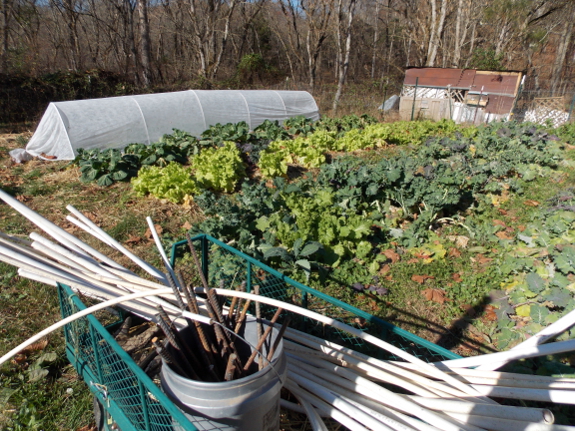
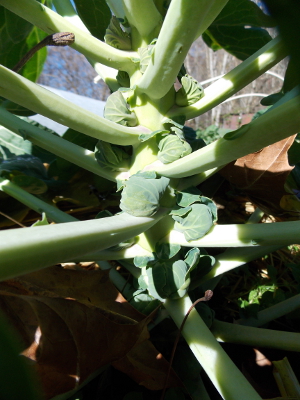 I put up a quick hoop over our last planting of lettuce in October,
and I meant to erect the other three quick hoops then too. But I
needed to make a decision about who to protect, and vacillation can take
awfully long time.
I put up a quick hoop over our last planting of lettuce in October,
and I meant to erect the other three quick hoops then too. But I
needed to make a decision about who to protect, and vacillation can take
awfully long time.
By the time I came back
to the project this week, a few things were clear. We started
eating Brussels sprouts from a few beds recently, but the long bed of
sprouts that got a lot of shade before the leaves fell from the trees
was trailing behind those in sunnier spots. If we want to enjoy
Brussels sprouts from that bed this year (which we adamantly do), we
need to extend the season, so that's one quick hoop accounted for.
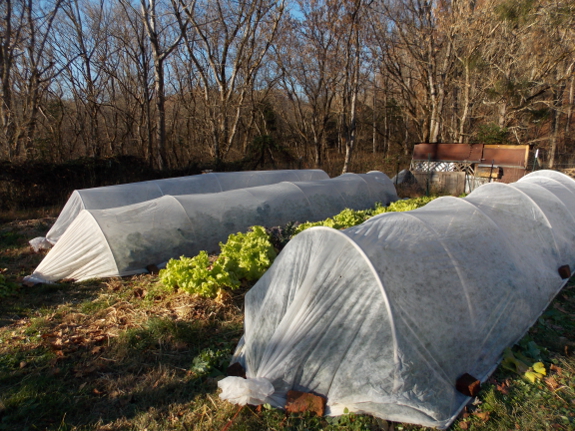
The other two quick hoops are earmarked for leafy greens, but which ones? We've got three kinds of kale, tokyo bekana, tatsoi, mustard, and Swiss chard
in the ground, and there's not enough row cover fabric to protect them
all. While I could make another quick hoop, I don't think we'd eat
more greens than that anyway, so it's best to stick to two hoops of
leafy greens.
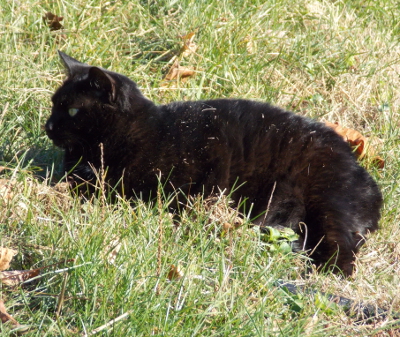 Huckleberry
reminded me that a few of these greens varieties are so tender they
won't last into December even under quick hoops. Despite the
brilliant coloration of the tokyo bekana pictured above, showing how
healthy the plants are, both this and the other Asian green are going to
bite the dust soon, as will our mustard. Those beds are best left
uncovered so I'll be sure to eat the tender greens up before real cold
weather hits.
Huckleberry
reminded me that a few of these greens varieties are so tender they
won't last into December even under quick hoops. Despite the
brilliant coloration of the tokyo bekana pictured above, showing how
healthy the plants are, both this and the other Asian green are going to
bite the dust soon, as will our mustard. Those beds are best left
uncovered so I'll be sure to eat the tender greens up before real cold
weather hits.
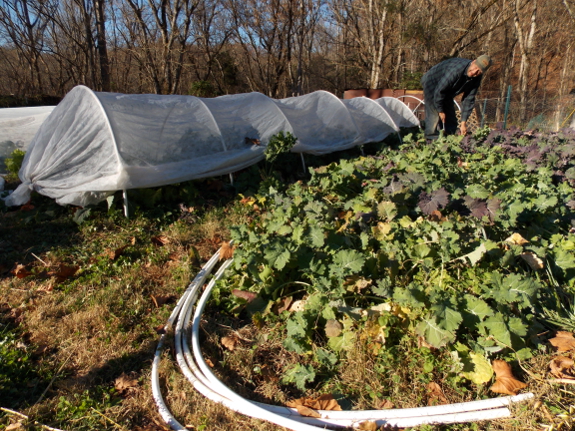
Since I'm opting to cover
the most winter-hardy greens in hopes of enjoying their leaves all
winter long, kale is the obvious winner. We devoted two whole
quick hoops to beds of kale, and still have other plants that will be
left uncovered for November munching.
One change I made to our leafy-greens coverage compared to other years
is that I went ahead and covered our Swiss chard as well as our
kale. This decision mostly came about because the chard is at the
end of the Brussels sprouts row and didn't require its own hoop, but I
also noticed last winter that Fordhook Giant appears to be just about as
winter hardy as our favorite kales (Red Russian and Dwarf
Siberian). (Our third kale variety this year is Laciniato --- I'll
report on its hardiness next spring.)
If you're still interesting in reading more about our quick hoops, I devoted a whole chapter to the topic in The Weekend Homesteader. (You can also read the same information in the 99 cent ebook Weekend Homesteader: October.)
Despite having to do more mending this year, we're going into our third
season using the same fabric, so the cost comes to about 10 cents per
square foot per year, and drops every year the structure stays in
use. I can't say enough good things about quick hoops and eating
fresh food all winter --- try it and you'll be sold too!
Want more in-depth information? Browse through our books.
Or explore more posts by date or by subject.
About us: Anna Hess and Mark Hamilton spent over a decade living self-sufficiently in the mountains of Virginia before moving north to start over from scratch in the foothills of Ohio. They've experimented with permaculture, no-till gardening, trailersteading, home-based microbusinesses and much more, writing about their adventures in both blogs and books.
Want to be notified when new comments are posted on this page? Click on the RSS button after you add a comment to subscribe to the comment feed, or simply check the box beside "email replies to me" while writing your comment.
- Remove comment
- Remove comment
- Remove comment

- Remove comment
